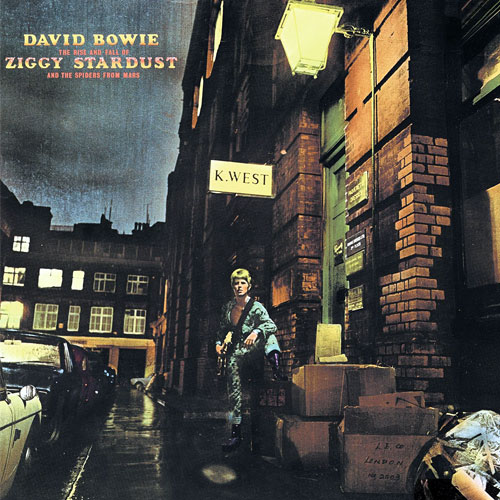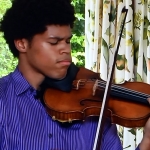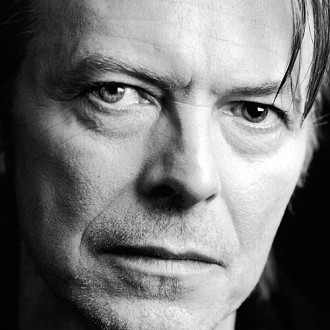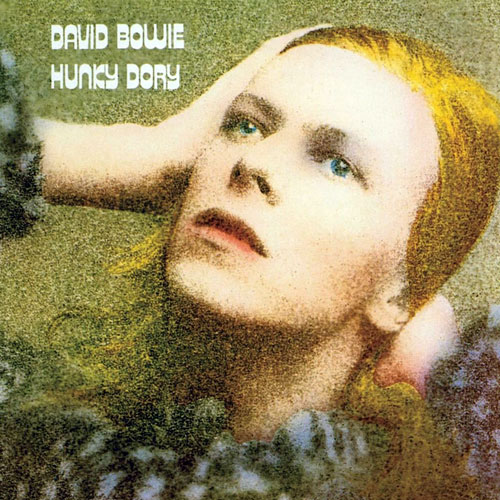David Bowie 1947-2016
“As was the case with Miles Davis in jazz, Bowie has come not just to represent his innovations but to symbolize modern rock as an idiom in which literacy, art, fashion, style, sexual exploration and social commentary can be rolled into one.” - Rolling Stone magazine
Bowie is the man who elevated his music to what can only be described as an art form.
Driven by an entirely deeper dynamic than most pop artists, David Bowie inhabits a very special world of extraordinary sounds and endless vision. Unwilling to stay on the treadmill of rock legend and avoiding the descent into ever demeaning and decreasing circles of cliché, Bowie writes and performs what he wants, when he wants. His absence from the endless list of “important events” has just fuelled interest. Constant speculation about what the guy was up to has even led some to wonder if this is his greatest reinvention ever. David Jones!
David Robert Jones was born in Brixton on January 8, 1947. At age thirteen, inspired by the jazz of the London West End, he picked up the saxophone and called up Ronnie Ross for lessons. Early bands he played with – The Kon-Rads, The King Bees, the Mannish Boys and the Lower Third –provided him with an introduction into the showy world of pop and mod, and by 1966 he was David Bowie, with long hair and aspirations of stardom rustling about his head. Kenneth Pitt signed on as his manager, and his career began with a handful of mostly forgotten singles but a head full of ideas. It was not until 1969 that the splash onto the charts would begin, with the legendary Space Oddity (which peaked at No. 5 in the UK). Amidst his musical wanderings in the late 60s, he experimented with mixed media, cinema, mime, Tibetan Buddhism, acting and love. The album, originally titled David Bowie then subsequently Man of Words, Man of Music, pays homage to all the influences of the London artistic scene. It shows the early song-writing talent that was yet to yield some of rock-n-roll’s finest work, even if it would take the rest of the world a few years to catch up with him.
Early 70s
Bowie’s first album, The Man Who Sold The World, was recorded as an entity in itself and marks the first definitive creative stretch for the listener. Mick Ronson’s guitars are often referred to as the birth point of heavy metal, and certainly the auspicious beginnings of glam rock can be traced here. The album was released by Mercury in April 1971 to minimal fanfare and Bowie took his first trip to the United States to promote it that spring. In May of the same year, Duncan Zowie Haywood Bowie was born to David and his then wife Angela.
RCA was the next label to sign Bowie, and after a trip to America to complete the legalities, he returned to London to record two albums nearly back to back. Hunky Dory was built from a six-song demo that had enticed the label to sign him and features Changes and Life On Mars. Almost immediately, it was followed up by the instant classic The Rise and Fall of Ziggy Stardust and The Spiders from Mars.
1972 was certainly the year that Bowie began to get a glimpse of the power of pop. GQ editor Dylan Jones said of the landmark 1972 Top of The Pops appearance on 6th July “This is the performance that turned Bowie into a star, embedding his Ziggy Stardust persona into the nations consciousness.” The sound of the suburbs suddenly got a whole lot louder. Previewed in London that spring, his rock-n-roll creation Ziggy Stardust staged one of the most spectacular and innovative live shows to date, and the craze that followed was the beginning of his superstar myth.
�
The summer of 1972 was also a busy one for him in the studio, as he produced albums for Lou Reed (Transformer) – a seminal record that to this day enthuses critics the world over and spawned the surprise leftfield hit, Walk on the Wild Side, a fairytale of the dark side of New York. The fact that David had also co-produced the terrifying and vastly influential Raw Power by Iggy and The Stooges that year, only added to his growing reputation as an artist to be taken most seriously. Bowie later went on to produce further Iggy albums – The Idiot and Lust for Life and co-wrote China Girl from Let’s Dance with the Detroit demon. He also produced Mott the Hoople (All The Young Dudes, for which he wrote the hit title track).

The US “Ziggy” tour began in September, with sold-out shows full of theatrically inspired Japanese costumes, snarling guitars courtesy of Mick Ronson, and a bold, daring approach to performance that propelled the audience into a rock-n-roll fervor. He abruptly put his own creation to rest on June 3, 1973 with the pronouncement: “Of all the shows on the tour, this one will stay with us the longest because not only is this the last show of the tour, but it is the last show we will ever do.” This surprised everyone in the house – not least the members of his band.
Amidst the Ziggy fever, Aladdin Sane was released in April 1973, inspired by his experiences in America while touring. After putting the “Stardust” show to bed, he travelled to France to begin work on his next albums. Pin-Ups was the last time that Bowie would record an album with Mick Ronson on guitar and Ken Scott at the production helm. His tribute to the artists that he admired in the London years of 1964-67 was released in October 1973. In April of 1973, his proto-Bladerunner project Diamond Dogs debuted full of tension and angst standing in stark contrast to the disco music that was beginning to crowd the airwaves. In the summer of 1974, he undertook his greatest US tour yet, with an enormous set and choreographed tableaus. The double album David Live was recorded in Philadelphia’s Tower Theatre, and serves as a souvenir of this tour.
Mid 70s
The two previous albums showed hints of Bowie’s interest in the music he heard in America. Authentic soul with a unique UK perspective meant this was far from being a homage. The most direct result of this fascination is the rhythmic, soul-laden Young Americans, released in 1975. A collaboration with John Lennon on Fame came out of an impromptu session at Electric Ladyland in New York and was a last-minute addition to the LP. It resulted in Bowie’s first ever No. 1 single in the US. The album also featured another David discovery soon to be better known as R&B singer Luther Vandross. He contributed backing vocals alongside the other legendary young American musicians such as Willie Weeks, Andy Newmark, David Sanborn and Mike Garson.
�
Not long after the album came out, he moved to Los Angeles and starred in the cult classic Nic Roeg science fiction film The Man Who Fell To Earth. After completion of filming, he almost immediately returned to the studio for the recording of Station to Station, a travelogue of sorts. The White Light tour followed, this time with an electronic-driven line-up, played out with Brecht- inspired theatricality. A compilation of hits, ChangesOneBowie, was released by RCA in May 1976. Never one to stay in one place too long, shortly after his tour finished, David relocated to the Schonenberg section of Berlin.
|
|

|

Midlake |
LATEST GALLERY IMAGES

Where Israel Goes, Misery Follows 
The Kanneh-Masons |
|
|



